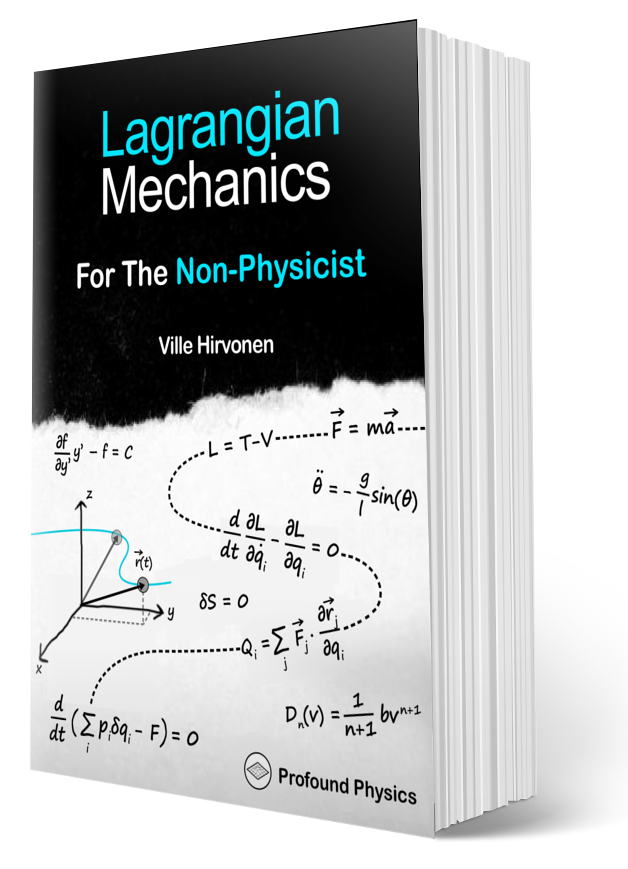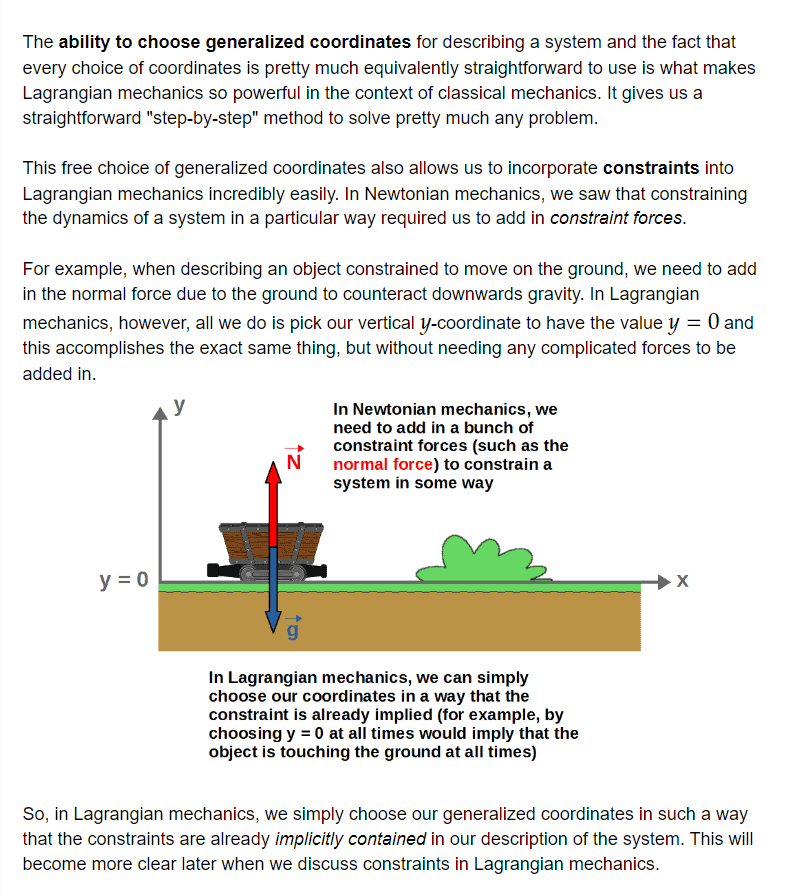Learn Lagrangian Mechanics The Right Way – Even If You’re A Beginner

Anyone who truly wants to understand general relativity, quantum field theory or any other area of modern physics first needs to master Lagrangian mechanics. Lagrangian mechanics is the framework used to describe all of modern physics.
The issue with most resources teaching Lagrangian mechanics is that they don’t truly teach you the why behind it – all they do is give you another approach for solving made-up mechanics problems. But what if it didn’t have to be this way? What if you could truly learn Lagrangian mechanics the right way?
The good news is that this book will do exactly that for you. It will take you on a journey through the very fundamentals, theory, mathematics and advanced applications of Lagrangian mechanics. You’ll learn Lagrangian mechanics in a completely unique way you’ve likely never seen before.
Lagrangian Mechanics For The Non-Physicist

$29.95
Lagrangian Mechanics & Field Theory: A Complete Course

$49.95
The Truth About Lagrangian Mechanics…
Anyone studying general relativity, quantum field theory or really any other advanced topic in physics will inevitably come across Lagrangian mechanics.
Trying to understand physics at a deep level without understanding Lagrangian mechanics is like driving a car without a steering wheel – you’ll eventually run into a wall and not be able to move forward anymore.
The issue is that Lagrangian mechanics is often taught in a very abstract way without really giving you the true why behind it, leaving you wondering “what am I ever going to do with this stuff?”
Most resources you’ll find will cover Lagrangian mechanics with the approach of treating it as just a more elegant way to solve some made-up mechanics problem that Newton’s laws could have solved anyway.
However, this approach is missing the point – Lagrangian mechanics is not just a tool for solving an arbitrary problem in a problem set.
The true reason why Lagrangian mechanics is so incredibly powerful is that it gives you a general framework for describing literally any area of modern physics.
THIS is the reason why Lagrangian mechanics exists and almost no one will teach you it this way…
Whether you want to learn:
- Electrodynamics
- Special and general relativity
- Quantum field theory
- String theory
You absolutely need to have a deep understanding of Lagrangian mechanics to even get started on any of these topics.
For myself, learning Lagrangian mechanics was the biggest catalyst that enabled me to understand high-level physics and I believe it will be for you too.
Today, I can confidently say that learning Lagrangian mechanics was the single most important thing I ever did in terms of my physics education.
However, if there is one thing I wish I would’ve had back when I first began learning it, it would be a dedicated resource that introduces Lagrangian mechanics completely from scratch and gives you everything in one place.
This is exactly what this book provides you with.
You’ll learn Lagrangian mechanics in a completely unique way you’ve likely never seen before – as both a fundamental framework related to advanced modern physics, but also as an incredibly powerful problem solving tool.
Lagrangian Mechanics For The Non-Physicist is a complete resource specifically designed to teach you everything you’d possibly need to know about Lagrangian mechanics – the fundamentals, prerequisites, theory, math and practical applications. It’s all here.
What This Book Can Do For You
I was a beginner on Lagrangian mechanics not too long ago. Now after learning it through the years, I understand exactly what I would have needed back then and what I believe you will as well.
Learn real physics, beyond popular science
Understand high-level ideas and methods underlying most areas of modern physics (electrodynamics, relativity, field theory and many more), so that you’ll have a much deeper understanding of physics than most people will ever have.
Understand advanced physics textbooks
Gain the necessary skills, knowledge and practical tools to pick up and understand any advanced physics textbook that talks about Lagrangian mechanics (that is, nearly any textbook on modern physics).
Save time and money on learning
This is the last book you’ll ever need on Lagrangian mechanics. And better yet, it will teach you the actually useful stuff in a fraction of the time.
Here’s Exactly What You Get:
The book is structured in logically ordered chapters that each cover a particular aspect of Lagrangian mechanics.
In total, the book includes:
Table of Contents
What Others Have Said About The Book & Course:
Some Samples From Inside The Book:




Frequently Asked Questions
What are you waiting for?
This is exactly the resource I wish I had back when I first began learning Lagrangian mechanics – and you can have it today!